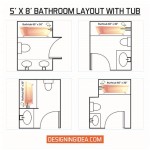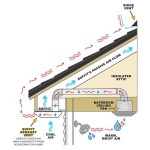Where To Install Grab Bars In The Bathroom: A Comprehensive Guide
The bathroom, while a place of hygiene and refreshment, can pose significant safety challenges, particularly for individuals with mobility limitations, seniors, and those recovering from injuries. Slippery surfaces, confined spaces, and the act of transferring between positions (sitting, standing, and showering) contribute to a heightened risk of falls. Grab bars, strategically installed, provide crucial support and stability, mitigating these risks and promoting independence. Determining the optimal placement for these assistive devices is paramount to maximizing their effectiveness and ensuring user safety.
Selecting the correct type of grab bar is the first step. Grab bars come in various lengths, materials, and styles. Straight bars are the most common and versatile, suitable for a wide range of applications. Angled bars can provide leverage for specific movements, while flip-up bars are ideal for maximizing space when not in use. Material choice is also important; stainless steel offers durability and resistance to corrosion, making it a popular option. Consider the user's weight, grip strength, and specific needs when selecting the most appropriate grab bar.
Before installation, it is critical to identify wall studs. Grab bars must be securely anchored to structural supports within the wall to bear the user's weight safely. Stud finders can be used to locate studs, or you can tap along the wall, listening for a solid sound that indicates a stud's presence. If studs are not ideally located, consider using specialized wall anchors designed for heavy-duty applications. These anchors distribute the load across a larger area of the wall, providing sufficient support even in the absence of a stud.
Placement Around the Toilet
The toilet area is a primary location for grab bar installation. Getting on and off the toilet can be challenging for individuals with limited mobility. Optimal placement here involves providing support for both sitting down and standing up. One common configuration is to install a vertical grab bar on the wall adjacent to the toilet, approximately 8 to 12 inches in front of the toilet bowl. This provides a stable handhold for pulling oneself up from a seated position. The height of this bar should be between 33 and 36 inches from the floor, aligning with the typical height of a toilet seat.
Another beneficial placement option is to install a horizontal grab bar on the wall behind the toilet. This bar assists with balance and stability while sitting. It should be positioned approximately 33 to 36 inches above the floor and extend at least 24 inches in length. When space is limited, a flip-up grab bar can be a useful alternative. It provides support when needed and can be folded up out of the way when not in use.
On the opposite wall, if space permits, another horizontal grab bar can be installed, mirroring the one behind the toilet. This provides bilateral support, accommodating users with varying levels of strength and coordination on either side of their body. The key consideration is to ensure that the placement facilitates a safe and comfortable transfer onto and off of the toilet.
The Americans with Disabilities Act (ADA) provides specific guidelines for grab bar placement in public restrooms. While these guidelines are not mandatory for residential settings, they offer a valuable framework for ensuring accessibility. ADA guidelines specify the height, length, and positioning of grab bars to accommodate a wide range of users. Adhering to these guidelines, even in a residential setting, can promote universal usability and accessibility.
Placement in the Shower or Bathtub
The shower or bathtub presents a high risk of falls due to slippery surfaces and the challenges of maintaining balance while washing. Installing grab bars in this area is crucial for preventing accidents. The placement should be tailored to the individual's needs and the layout of the shower or bathtub.
For showers, a vertical grab bar should be installed near the shower entrance, approximately 33 to 36 inches from the floor. This provides support for stepping into and out of the shower. Another vertical grab bar should be installed on the shower wall opposite the showerhead, also at a height of 33 to 36 inches. This provides support for maintaining balance while showering.
A horizontal grab bar can be installed along the back wall of the shower, at a height of 33 to 36 inches. This provides additional support and stability. For individuals who prefer to sit while showering, consider installing a grab bar near the shower seat. The height of this bar should be adjusted to suit the individual's reach and preferences.
For bathtubs, a horizontal grab bar should be installed on the wall adjacent to the tub, approximately 4 to 6 inches above the rim of the tub. This provides support for entering and exiting the tub. Another vertical grab bar can be installed on the wall at the far end of the tub, also at a height of 33 to 36 inches. This provides additional support for maintaining balance while bathing.
Angled grab bars can be beneficial in both showers and bathtubs, providing leverage for specific movements. The angle should be determined based on the individual's needs and preferences. Ensure that all grab bars are securely anchored to wall studs or reinforced with heavy-duty wall anchors. Consider using textured grab bars to provide a better grip, especially when wet.
Prior to drilling any holes, it is essential to verify the location of plumbing lines within the walls. Use a stud finder with metal detection capabilities to avoid accidentally damaging pipes. If in doubt, consult with a qualified plumber or contractor before proceeding with the installation. Damage to plumbing can result in costly repairs and further safety hazards.
General Considerations for Grab Bar Installation
Beyond specific locations like the toilet and shower, several general considerations apply to all grab bar installations within the bathroom. The primary goal is to create a safe and accessible environment that promotes independence and confidence. Proper height and positioning are crucial for maximizing the effectiveness of grab bars.
The standard height for grab bars is typically between 33 and 36 inches from the floor. However, this may need to be adjusted based on the individual's height and reach. It is best to have the user demonstrate their reach and movement patterns to determine the optimal height for their needs. Consider simulating the actions they will be performing, such as sitting, standing, and transferring, to ensure that the grab bars are positioned for maximum comfort and support.
The length of the grab bar should also be considered. Longer grab bars provide a wider range of support and are generally preferable. However, space limitations may necessitate the use of shorter bars. Ensure that the grab bar is long enough to provide a secure grip and adequate leverage. The grab bar should extend beyond the area where support is needed, allowing the user to maintain a firm hold throughout the movement.
The distance between multiple grab bars should be carefully considered. Too much distance can make it difficult to transfer between bars, while too little distance can restrict movement. The optimal distance will depend on the individual's reach and the specific movements they will be performing. Consult with an occupational therapist or other healthcare professional for guidance on determining the appropriate spacing.
Regularly inspect grab bars to ensure they remain securely attached to the wall. Periodically test the stability of the grab bars by applying weight and pressure. If any loosening or damage is detected, promptly repair or replace the grab bars to prevent accidents. Maintaining the integrity of the grab bars is essential for ensuring their continued effectiveness.
The chosen location should be convenient and easily accessible. Avoid placing grab bars behind obstacles or in areas that are difficult to reach. Ensure that the area around the grab bar is clear and free from obstructions, allowing the user to move freely and without hindrance. A well-placed grab bar can significantly enhance the safety and accessibility of the bathroom, promoting independence and reducing the risk of falls.
Ultimately, the most effective grab bar placement is one that is tailored to the individual's specific needs and the unique layout of the bathroom. Collaborating with an occupational therapist or certified aging-in-place specialist (CAPS) can provide valuable insights and recommendations. These professionals can assess the individual's mobility limitations, functional abilities, and environmental factors to develop a customized grab bar installation plan that maximizes safety and independence.

Proper Shower Grab Bar Placement Keeps Your Family Safe Improveit

Proper Shower Grab Bar Placement Keeps Your Family Safe Improveit

Grab Bar Installation Types Leslievillegeek Tv And Wire Hiding Experts

Proper Shower Grab Bar Placement Keeps Your Family Safe Improveit

Installing Grab Bars In Your Bathroom A Complete Guide

Future Proof Your Bathroom Prepare For Grab Bars Hatchett Contractors

Grab Bar Specialists Installation

Where To Install Grab Bars Add Safety Stability Your Home

Grab Bar Placement Guides Grabbars Com

Where Should Toilet Grab Bars Be Installed Freedom Showers
Related Posts







